Good air temperature for a person. Room temperature in the nursery
For a newborn, room temperature is not the only important criterion for air quality. You should pay attention to its cleanliness, humidity.
It is necessary to timely and efficiently ventilate the room. It is important to know that when airing in winter, the air in the room is not properly humidified.
Why is it so important to pay attention to room temperature for an infant? The fact is that in young children the process of thermoregulation, namely its mechanisms, has its own characteristics. Very often there is a risk of hypothermia.
Often, relying on the factor about the imperfection of heat transfer in children, parents come to a chain of incorrect conclusions. Fearing colds, parents resort to additional sources of heat: electric heaters, warm clothes, etc. Worried about possible hypothermia, they forget that such imperfections can also lead to overheating. It is important to know what temperature is comfortable for the newborn.
normal body temperature
Heat transfer affects the functioning of all organ systems. For infants allowable temperature body is in the range of 36 - 37 C. Heat transfer is a very individual process, so there are many deviations from the norm. They can be caused by various features of the body or health disorders.
Small deviations can be caused by:
Genetic features (at the same time, the child does not show signs of hyper- or hypothermia);
Measurement time
Stressful situations or nervous strains
Overheating of the body (prolonged exposure to the sun, in a hot room, in warm clothes).
Optimal conditions
After you have provided ways to control room temperature, you should pay attention to possible ways its regulation. If you are just planning a repair, it is advisable to make sure that temperature controllers are on the batteries. Unfortunately, the presence of this function on batteries in apartments is still not widespread, therefore, there is no way to install them, you can reduce heat production by covering the batteries with a damp cloth.
The humidity level in the room where the child is located should be at least 50 - 70%. To support it, you can purchase a device such as a humidifier. You can also increase this figure with the help of improvised means: decorative fountains, aquariums, water containers. Regular wet cleaning in the room will also help.
The optimal room temperature for an infant is 19-20 C.
In winter, during work heating systems, you should adjust the room temperature for the baby so that the thermometer does not rise above 23 C. This will help control the level of humidity in the air.
Comfortable temperature in the room for a newborn during sleep should be no higher than 22 C. Low temperatures contribute to a more restful sleep.
If the temperature in the room for a newborn baby cannot be reduced below 22-23 C, the following actions should be taken:
Remove excess clothing that may cause overheating;
Provide him with plenty of drink;
Bathe a child.
It is possible to determine whether the room is at a comfortable temperature for an infant or not, focusing on the child's need to drink. Healthy child greedily drinking water - an indicator of excess temperature in the room.
Evgeny Olegovich Komarovsky, a well-known pediatrician, believes that overheating is a much more dangerous factor for a child than hypothermia. Therefore, the doctor strongly recommends that the temperature in the room with the child be below 22 degrees.
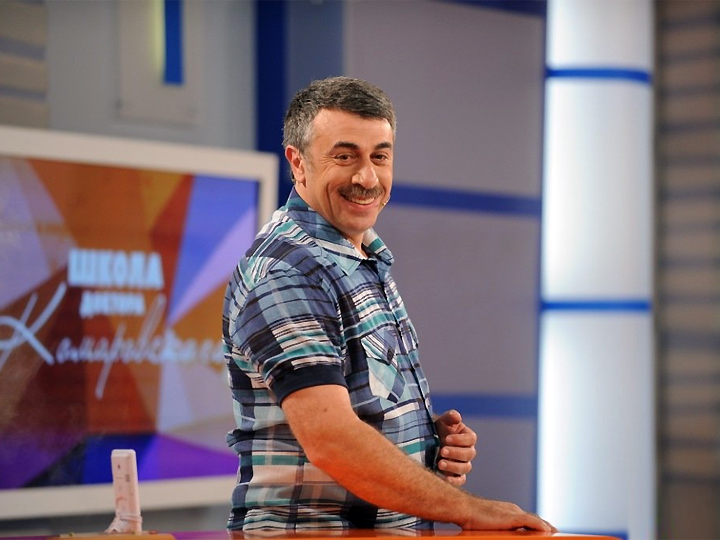 Evgeny Olegovich claims that a healthy children's body is able to independently protect itself from excessive hypothermia: the vessels narrow, the blood circulation speed decreases. Thus, the body retains the heat it needs. Therefore, it is very important to temper the child from birth, allowing his body to become stronger. Excessive guardianship in this case is fraught with many negative consequences: the body weakens, its protective functions atrophy.
Evgeny Olegovich claims that a healthy children's body is able to independently protect itself from excessive hypothermia: the vessels narrow, the blood circulation speed decreases. Thus, the body retains the heat it needs. Therefore, it is very important to temper the child from birth, allowing his body to become stronger. Excessive guardianship in this case is fraught with many negative consequences: the body weakens, its protective functions atrophy.
Komarovsky focuses on the fact that viruses are the cause of acute respiratory infections, and not hypothermia of the child. Moderately low temperatures only strengthen the immune system.
Children's room
To create comfortable conditions For a child, parents should remember the following conclusions:
The temperature in the room should be no higher than 23 C;
The air must be sufficiently humidified;
The air must be clean and fresh, for this it is necessary to regularly ventilate the room and do wet cleaning;
The room should not have any sources of toxins that may be contained in fragrances, bright dyes;
The shades of the walls should be calm.
So you can create optimal conditions in the room. This will not only help keep the body healthy, but will also bring a number of other positive changes. A suitable atmosphere in the house will help to make children's sleep calm, children will be energetic and less exposed to negative emotions.
Autumn is coming and we are looking forward to the start of the heating season. In an apartment without heating on chilly autumn days it becomes uncomfortable. Sometimes it seems that on the street than at home. And if there is a small child, then the unpleasant coolness becomes a real problem for parents.
What do doctors think?
I would like to know what temperature should be in the children's room, where the newborn is all day. Pediatricians believe that a comfortable room temperature for a child is 22 ° C. Some doctors recommend not to raise the baby in greenhouse conditions, but to temper it at a temperature of 19 ° C. For an adult, these are not very comfortable conditions, but the baby's natural protective mechanisms work, and he adapts to environment faster than adults.
It is interesting, but true: the more persistently the parents try to create greenhouse conditions for the baby, the more sick he is. It has been noticed that the opposite is true: the room temperature in the room where the child sleeps does not particularly bother anyone, and the children grow up almost without getting sick.
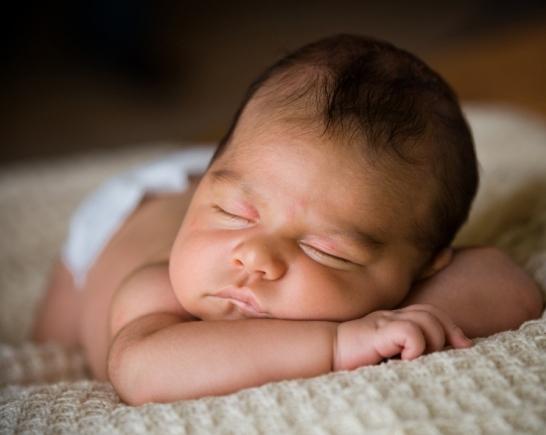
What happens to a newborn with excess heat?
The higher the room temperature in the nursery, the less heat is lost from the body. Thus, the baby sweats, which is a bad sign. No wonder pediatricians believe that let better for a child it will be a little cold than it will overheat.
Sweating, the baby loses water and salt, he develops diaper rash or redness on those areas of the skin where the arms and legs are bent, on the back of the head and back. The child suffers from pain in the tummy due to poor digestion of food due to loss of water, dry crusts appear in the nose. It is desirable that the room temperature in the nursery be measured with a working thermometer, and not with the feelings of the parents. The thermometer can be hung closer to the newborn's bed.
Not cold and not hot
It happens that the level can not be changed to the optimal state. Do not be afraid that in a cool room the child will get sick. A newborn has such an active metabolism that the normal room temperature for him can be about 18 ° C, and he will sleep sweetly and feel comfortable. It is not recommended to wrap up the baby if the room is 20 ° C.
At water procedures you should not specially heat the room, otherwise after heating the child with his sensitive nose will "catch" the temperature difference in the bathroom and in another room and may catch a cold.
Humidity in the room
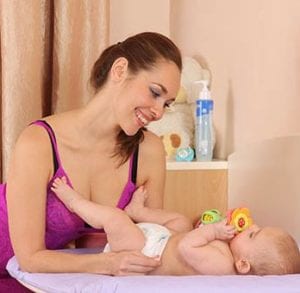 Of great importance for the baby's room is Dry air leads to the fact that the child's body loses fluid, the mucous membrane and skin dry out. Comfortable humidity should be 50%, not less. To increase it, you can put a container of water or a humidifier near the baby's crib.
Of great importance for the baby's room is Dry air leads to the fact that the child's body loses fluid, the mucous membrane and skin dry out. Comfortable humidity should be 50%, not less. To increase it, you can put a container of water or a humidifier near the baby's crib.
Purity
Do not forget that the baby's room should be ventilated several times a day and the optimum room temperature should be maintained in it. Which? Not more than 22°C. Wet cleaning also has great importance, but only with a minimum amount of detergents. If you follow all the recommendations, the baby will sleep peacefully and delight his parents with his healthy appearance.
A comfortable atmosphere in the nursery is essential for the health and well-being of every baby. It is not surprising that parents strive to maintain optimal air temperature and humidity at home.
However, fearing that the baby will freeze, some adults try to warm it by any means, allowing overheating by improper actions.
That is why it is so important to know what the temperature in the room for a newborn should be, and adjust its parameters for your baby.
One of the main features of the baby is the high rate of metabolic processes in his body, even during sleep. During metabolism, a certain amount of heat is released, requiring release into the environment.
In the human body, heat exchange is carried out in two ways - with the help of the respiratory system and through sweating:
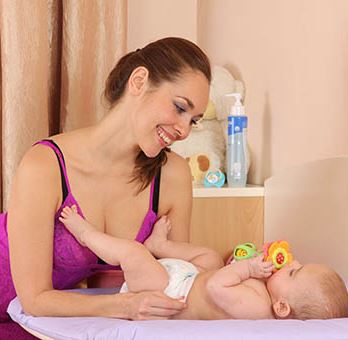 1. In the first case, the child breathes air whose temperature is lower than body temperature.
1. In the first case, the child breathes air whose temperature is lower than body temperature.
The air masses, having passed through the "air duct" and the lungs, begin to heat up in order to carry away excess heat with exhalation. If the air temperature is significantly lower than the temperature of the child, then heat transfer increases.
2. The process of perspiration is also important for functioning human body. The increased temperature "blocks" the respiratory mechanism, which is why sweating is activated.
The excretory system of the baby produces fluids that go to skin and excrete the salts needed by the body.
As a result, the child begins to overheat, the symptoms of which are:
- drying of saliva, which is fraught with the occurrence of candidiasis (thrush);
- the appearance of crusts and scabs in the nasal passage, making it difficult to breathe normally;
- problems with the tummy, since the lack of fluid does not allow the organs of the gastrointestinal tract to absorb milk (gastric juice thickens);
- the occurrence of diaper rash - redness of the skin under the diaper and in the folds (this is how the baby's skin reacts to salty sweat secretions).
The increased sweating process is extremely dangerous for the child's body, because in special situations there is such a severe loss of fluid that emergency hospitalization is carried out to eliminate it and intravenous infusions are prescribed.
Hypothermia is just as dangerous for a child, as the risk of colds increases, fraught with the most serious undesirable consequences.
Signs of hypothermia in a child's body are:
- cold hands and feet;
- bluish skin tone in the area of the nasolabial triangle;
- pale skin.
To exclude both of these conditions - overheating and hypothermia - parents need to maintain normal air temperature and humidity so that the baby feels as comfortable as possible.
You should not rely on the advice of experienced mothers or grandmothers when it comes to the health of the baby. Moreover, pediatricians and neonatologists have long determined the main physical parameters for a children's room.
So, according to their research, the room temperature for a healthy newborn should be between 18-22 degrees. You can control these indicators with the help of an air conditioner and a thermometer near the baby's crib.
However, this is not all, since the optimal room temperature in the apartment depends on several conditions:

- For normal sleep and rest in the summer it is necessary to keep the temperature within 18 degrees. To prevent overheating, most likely, you will have to purchase an air conditioner.
- With the beginning of the heating season, the temperature in the room of a tiny newborn changes significantly, however, as does the humidity. If during the period of activity of children the temperature regime can be in the range of 23-24 degrees, then for sleep, you can use the air conditioner to bring the indicators up to 18-20 degrees (this is the norm).
- In general, it is especially important to exclude overheating of the child during sleep. Normal room temperature at night should not exceed 22 degrees. In an excessively overheated room, the child will not sleep comfortably, stuffy, so babies will wake up and cry.
In addition, the personal characteristics of the baby should be taken into account: someone will be able to sleep at 19 degrees, while for other children this room temperature will seem too cold. That is why every mother should keep track of whether the legs of a baby are cold and whether it is wet during sleep.
You should also take into account the fact that the above temperature indicators are only suitable for children born on time.
A premature baby needs to create special conditions, since he has poorly developed thermoregulation. Therefore, the room temperature for a premature newborn is 25 degrees.
It is important to observe the temperature regime not only for the room in which the child sleeps and rests, but also in the bathing room. Some parents are sure that a child up to five years old can and should be bathed in a heated room. However, they are wrong.
If you bathe the baby in a hot room, then after moving to a cool bedroom, the baby may get cold and catch a cold. Therefore, you should not specifically overheat the room for swimming.
If you want to harden the baby from birth, gradually accustoming to low temperatures, on the contrary, after bathing, do not rush to dress him in numerous clothes, but arrange an air bath for him.

In order for the temperature in the room for the newborn to correspond to the optimal indicators, it is necessary to establish which “weather” is more suitable for your child. You can not worry about overheating and hypothermia if:
- the child feels normal, behaves calmly during sleep;
- the child's skin is dry, redness is not observed;
- the limbs of the child are warm, he is not covered with goosebumps;
- breathing and heartbeat are not too rapid.
When the air temperature differs significantly from the normative indicators, it is necessary to immediately begin to optimize the home microclimate.
Your actions will depend on how many degrees in the room - too much or too little.
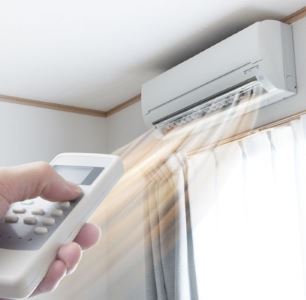 If the house is hot and stuffy, then you can:
If the house is hot and stuffy, then you can:
- regularly ventilate the room (3-4 times a day), taking the child to another room at this time or going out with him for a walk;
- install the air conditioner away from the child - in another room or at a distance from the baby (it should not fall under the directed air jets of the air conditioner);
- batteries bursting with heat are covered with thick blankets, bedspreads, blankets that trap heat inside;
- remove extra clothes from the baby - you can leave the baby in one diaper;
- constantly supplement the child with water to prevent overheating and reduce the risk of dehydration;
- often bathe the baby in a little cool water;
- get rid of various bedside canopies, which are not only a dust collector, but also disrupt heat transfer.
If the temperature regime is low, the child is cold, it is necessary to purchase a heater that cannot be placed next to the crib in order to avoid undesirable consequences.
If the room temperature exceeds 20 degrees, in addition to turning on the air conditioner, it is also necessary to monitor the “suit” of the baby. You don’t need to wear a hat and socks for him, an ordinary vest shirt will suffice, and a bodysuit is best.
 Since a child wrapped in diapers cannot warm up with movement, it is necessary to dress him a little warmer to avoid hypothermia.
Since a child wrapped in diapers cannot warm up with movement, it is necessary to dress him a little warmer to avoid hypothermia.
It is believed that swaddling somewhat violates the natural heat transfer, so the baby is definitely not threatened with overheating.
The child also practically does not move in a dream, which is why he is usually additionally covered with a blanket, but first you need to check the temperature regime. At rates above 18 degrees, wadded blankets are not recommended.
Remember that in a room where the air conditioner is on, and you are a little cool, the child, on the contrary, is warm and comfortable.
Before dressing him in numerous clothes, touch the limbs - if they are warm, then the baby is warm. If the skin is reddish, moist, then the child is hot.
Air humidity
Another the most important indicator normal microclimate - air humidity.
Most often, the apartment is rather dry, especially with the beginning of the heating season. That's why parents need to maintain ideal humidity - about 50-70 percent.
You can find out its indicators using a special device.
If the air is too dry, you can fix the situation by purchasing a quality humidifier. Unable to buy an automatic device? Raise your humidity levels with these grandma's methods:
- place jars or basins of water around the crib;
- install an open aquarium next to the child;
- hang wet towels on the radiators.
So, optimum temperature in the room of a healthy newborn usually does not exceed 18-20 degrees. Ideal humidity levels are between 50 and 70 percent.
Such parameters are important for the well-being, mood and health of the little man. It is in your power to create for him Better conditions for normal growth and development!
Hello, I'm Nadezhda Plotnikova. Having successfully studied at SUSU as a special psychologist, she devoted several years to working with children with developmental problems and advising parents on raising children. I apply the experience gained, among other things, in the creation of psychological articles. Of course, by no means do I pretend to be the ultimate truth, but I hope that my articles will help dear readers deal with any difficulties.



